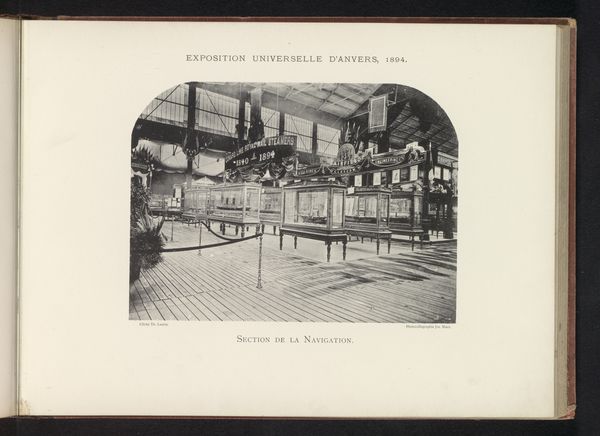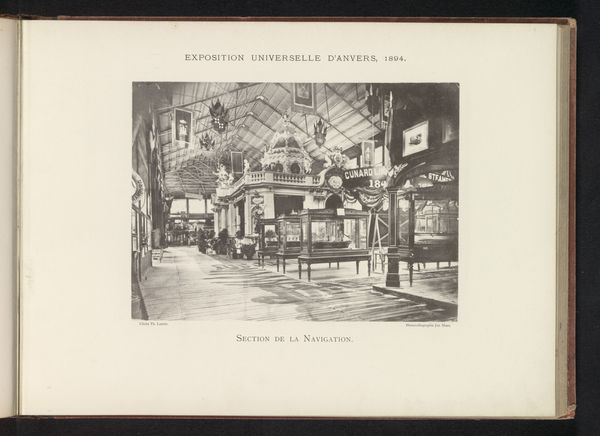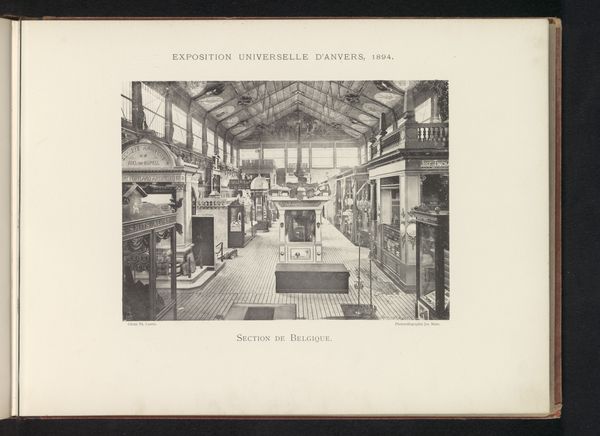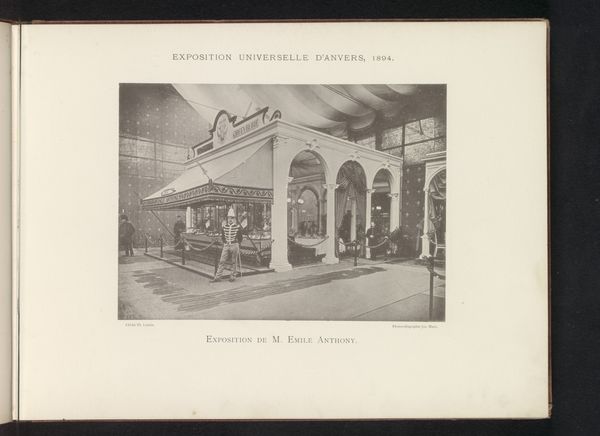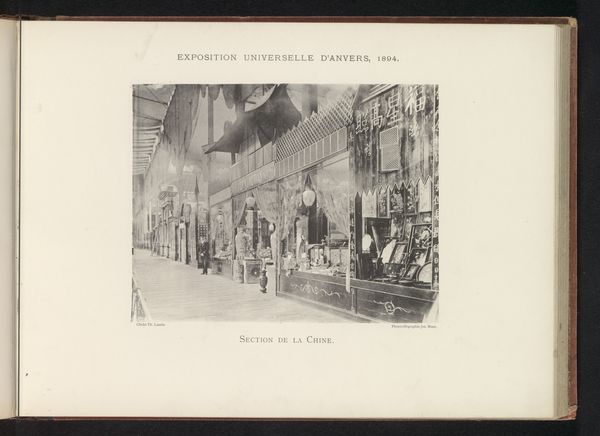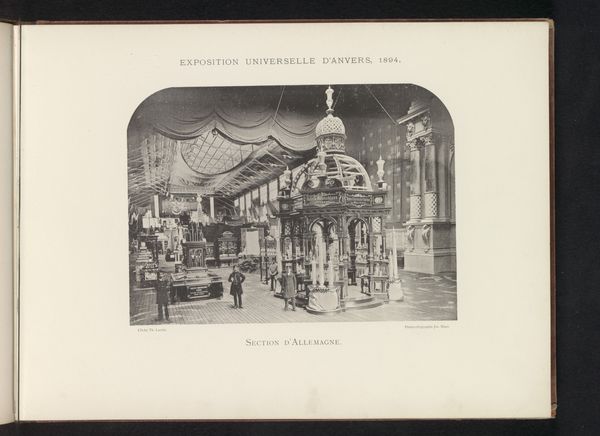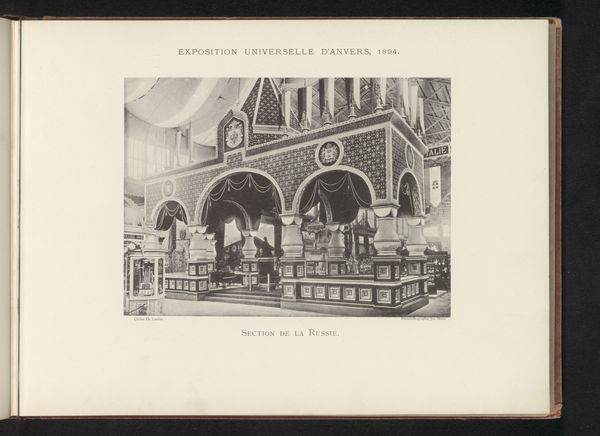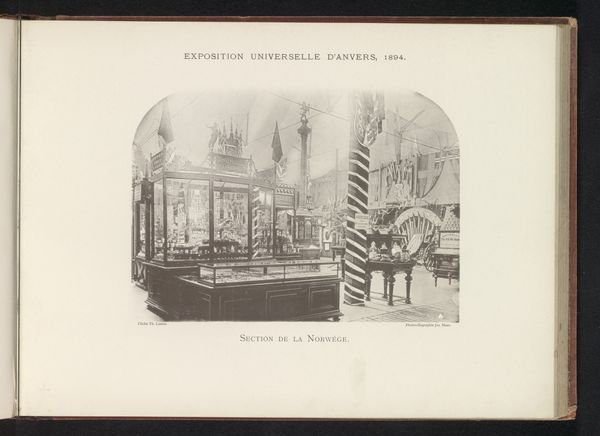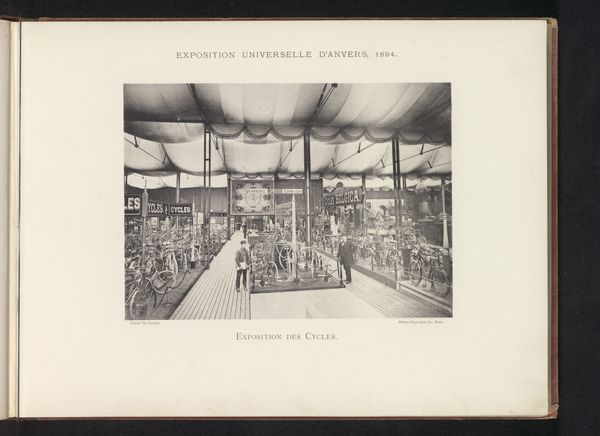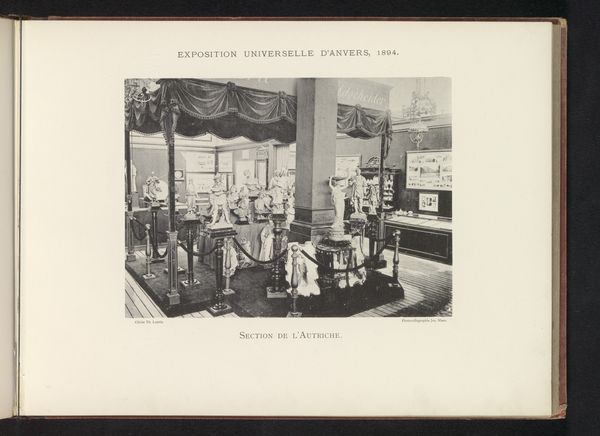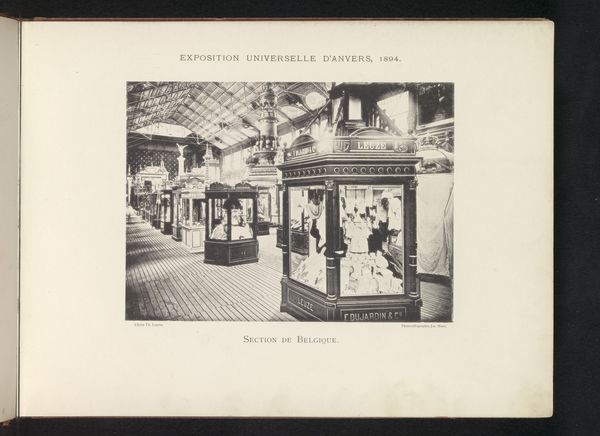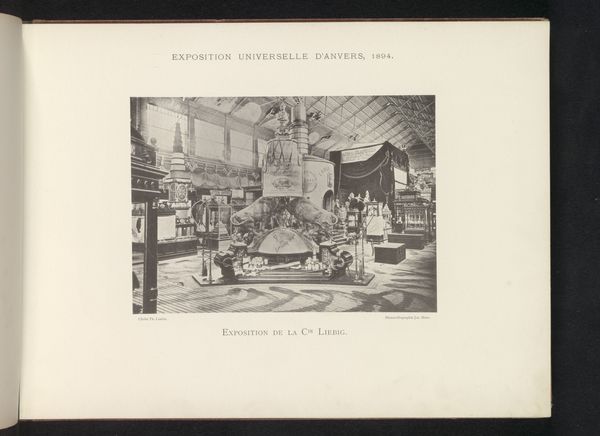
Interieur van het paviljoen uit Hamburg tijdens de wereldtentoonstelling te Antwerpen 1894
0:00
0:00
print, photography, gelatin-silver-print
# print
#
photography
#
gelatin-silver-print
#
cityscape
#
realism
Dimensions: height 160 mm, width 219 mm
Copyright: Rijks Museum: Open Domain
Curator: This gelatin-silver print from 1894 captures the interior of the Hamburg Pavilion at the World Exhibition in Antwerp, as seen through the lens of Th. Lantin. Editor: There's a striking stillness. An almost melancholic hush seems to pervade this space. I’m drawn to the elaborate, almost theatrical, embellishments contrasted with what looks like very little activity inside. Curator: The world exhibitions of this period were crucial venues for nations to project a specific image of themselves, showcasing their economic and cultural prowess. Hamburg, as a major port city, likely used this pavilion to emphasize its industrial achievements. The images convey how nations competed for attention. Editor: The composition directs our eye towards the emblems overhead, the crests of Hamburg. They are asserting their presence but also reminding us of a grand history. These symbols spoke volumes to viewers familiar with civic heraldry. The draped tables holding indiscernible wares speak of wealth, of global commerce and aspiration. Curator: Absolutely. And it's important to note how photography itself was also on display. These pavilions presented opportunities to exhibit and disseminate photography as a modern, accurate method of documenting and advertising national capabilities. Editor: It's a scene pregnant with aspiration, though that moment has vanished. Consider the symbolic weight of absence: where are the people? The grandeur on display seeks to imprint a certain vision, an official, self-aggrandizing narrative. But what echoes louder now is its silent quality. Curator: Yes, the emptiness can certainly feel ghostly now, but for contemporary audiences it might have signaled order and progress. Photography’s indexicality offered an experience of verisimilitude crucial for these expositions of identity. It would, quite literally, provide “evidence” of Hamburg's advancement. Editor: Perhaps, and perhaps its emptiness now prompts reflection on what all this display cost, on the human element so conspicuously absent. It’s an afterimage ripe with both pride and melancholy. Curator: A rich insight indeed! It underscores how these visual artifacts not only present a picture of their time but invite us to engage in an ongoing dialogue about culture, power and perception.
Comments
No comments
Be the first to comment and join the conversation on the ultimate creative platform.
